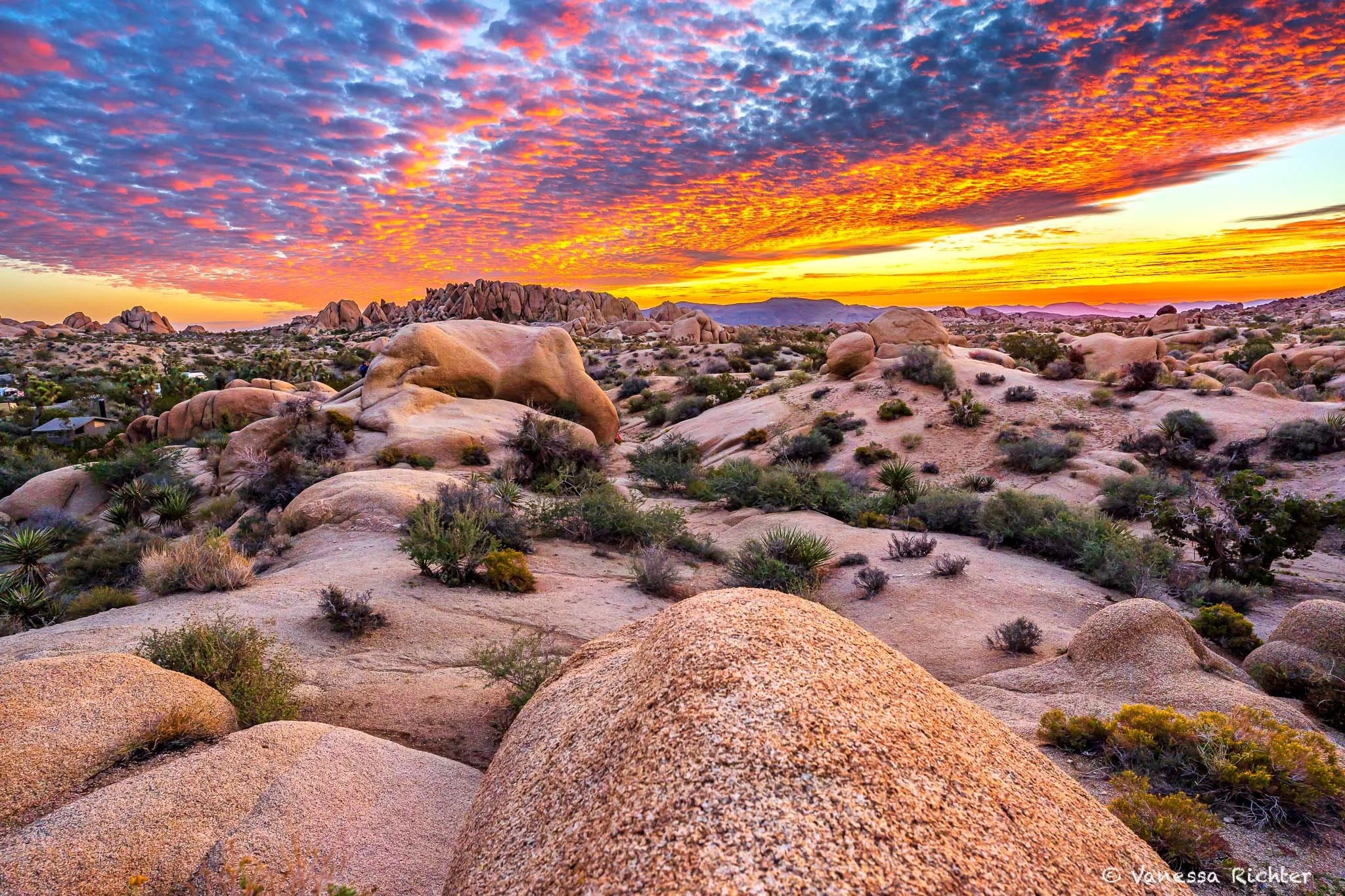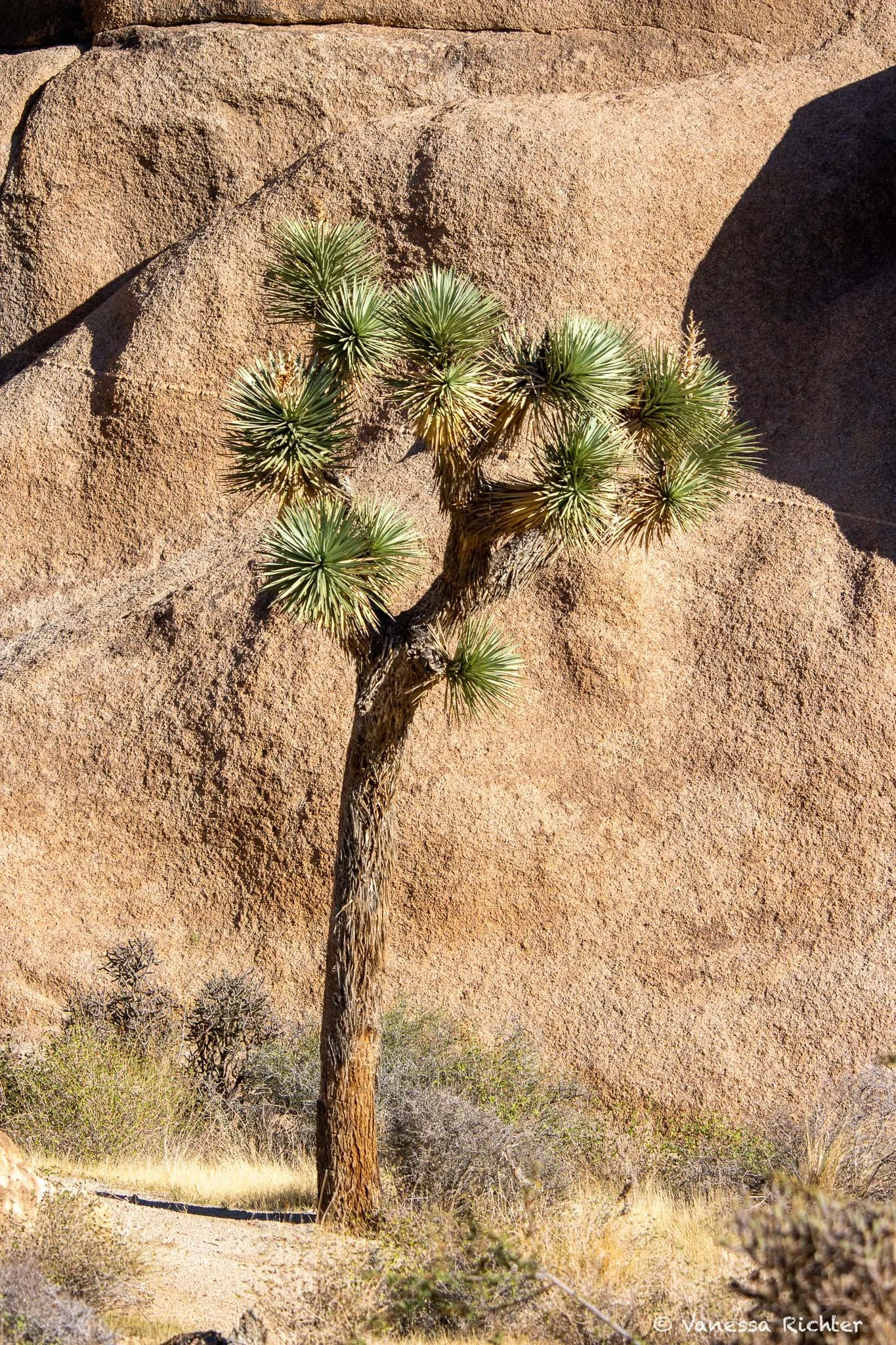Full Guide to Joshua Tree National Park: Hikes, Wildlife, Stargazing, and More
Joshua Tree National Park is one of my favorite national parks in California. The vast desert landscapes are where I feel incredibly small and insignificant as a human—yet in the most fulfilling way. It is a humbling reminder of nature’s power and just how fragile we are in such a harsh environment. This sparks a deep sense of adventure in me, reminding me of what it means to not just exist, but to truly feel alive. Besides that, the reason why I particularly love Joshua Tree National Park is its diversity.
In this blog article, I will share my favorite things to do in the park during fall and winter—though most of them apply to any season—offer insights into the history and geology, provide accommodation tips, and give guidance on park entrances.
Table of Contents
Just so you know: This post contains affiliate links, which means I may earn a small commission if you make a purchase through them — at no extra cost to you. I only recommend tours, gear, or services I truly believe in and think you’ll love too. Thanks so much for supporting my blog!
In a Nutshell: Cultural History
While National Parks such as Joshua Tree are often perceived as pristine and “untouched” by humans, most (if not all) of these places had in fact been inhabited for thousands of years. Before national parks were established, they were spared though, from larger development. You can still see remnants of Native American culture as well white settlers’ acitivities in Joshua Tree National Park.
Native Americans
Between 8000 and 4000 BCE, Native Americans of the Pinto Culture inhabited the area that now constitutes Joshua Tree National Park. Subsequent residents included the Serrano, Cahuilla, and Chemehuevi peoples, who established small villages near water sources, with a notable presence at the Oasis of Mara, later referred to by non-natives as Twentynine Palms. Their sustenance relied heavily on plant-based foods, complemented by small animals, including amphibians and reptiles. Additionally, they utilized various plants for crafting medicines, bows, arrows, baskets, and other essentials. Another group, the Mojaves, made use of local resources while traversing trails between the Colorado River and the Pacific coast.
Arrival of White Settlers and Shifting Landscapes
The landscape underwent significant transformations with the arrival of white settlers introducing cattle grazing to the park in 1870, which continued until 1945. The ranchers dug wells and built rainwater catchments called "tanks", such as White Tank and Barker Dam. In addition, mining acitivities between the 1860s and 1940s impacted Joshua Tree's terrain. The Lost Horse Mine was the most successfull gold and silver mine within what is today Joshua Tree National Park.
Protection of Joshua Tree
In a historic turn of events on August 10, 1936, advocates, led by Minerva Hoyt, successfully lobbied for the protection of Joshua Tree. President Franklin D. Roosevelt utilized the 1906 Antiquities Act to establish Joshua Tree National Monument, marking a crucial step in preserving the area's cultural and natural heritage. When the U.S. Congress passed the California Desert Protection Act, Joshua Tree was then redesignated as a national park in 1994.
In a Nutshell: Geology
In Joshua Tree National Park, two deserts meet: the Mojave Desert and the Colorado Desert.
Mojave Desert
The Mojave Desert encompasses the western and higher elevation part of Joshua Tree National Park, providing a habitat where Joshua Trees thrive. In some areas, Joshua Trees create rather dense forests, while in others, they are more spread out. The western part also features many hills of bare rock that, in some places, are eroded to odd shapes.
Colorado Desert
Below 3,000 feet (910 m), the Colorado Desert spreads out in the eastern part of Joshua Tree National Park. This area is different regarding vegetation from the more western parts encompassing the Mojave Desert. Here, you won’t find many Joshua Trees, and the vegetation appears much sparser. For example, you’ll find creosote bush scrub, ocotillo, or cholla cactus (including the Cholla Cactus Garden, which has — as the name suggests — a particularly dense population of these cacti). The Coachella Valley (famous for its Coachella Valley Music and Arts Festival) is located within the Colorado Desert too (southeastern side of the park), encompassing desert dunes and sandy soil grasslands.
Palm Oases
There are only very few areas within the park where water occurs naturally year-round. In these areas, palm oases occur and provide a habitat for the only palm native to California, the California fan palm.
Joshua Trees threatened by Climate Change
Sadly, research suggests that by 2099, under the high emission scenario, the park will increase in temperature by 8 °F, which would make most of the national park unsuitable habitat for Joshua trees. Even under the low emission scenario, 80% of suitable Joshua tree habitat could be lost. Read more about this here.
Will these beautiful trees become rare or go extinct by the end of the century? Hopefully, we can still change this prognosis.
Where to Access the Park
Joshua Tree National Park has three main entrances plus one additional access point for the Black Rock area.
West Entrance
Located near the town of Joshua Tree, this is the most popular entrance for visitors coming from the west, especially from the Los Angeles area. It provides access to the Joshua Tree Visitor Center.
North Entrance
This entrance is situated near the town of Twentynine Palms and is convenient for travelers arriving via Interstate 40.
South Entrance
Located near the Cottonwood Visitor Center, this entrance is accessible from Interstate 10. It’s a great choice for visitors coming from the south or southeast.
Yucca Valley / Black Rock Entrance
This entrance provides access to the Black Rock Campground and surrounding area, but has no direct road connection to the main sections of the park. If you’re a first-time visitor with limited time, I recommend starting with the larger, interconnected areas. However, if you're visiting during a busy season and prefer more solitude, this area is a fantastic alternative with great hiking trails and abundant Joshua trees.


